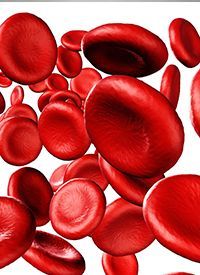Itolizumab May Minimize Incidence of aGVHD Following HSCT, Improve Outcomes
Itolizumab showed the potential to decrease the response of host T cells to a donor graft, minimize the incidence of acute graft-vs-host disease following hematopoietic stem cell transplantation, and improve outcomes for these patients.

Itolizumab showed the potential to decrease the response of host T cells to a donor graft, minimize the incidence of acute graft-vs-host disease (aGVHD) following hematopoietic stem cell transplantation (HSCT), and improve outcomes for these patients, according to findings from a poster presentation delivered at the 2021 ASH Annual Meeting.1
Results indicated that itolizumab served to block the engagement between CD6, a costimulatory receptor primarily expressed on T cells, and activated leukocyte cell adhesion molecules. The agent was also found to induce the antigenic modulation of CD6 through a cleavage event. This event required membrane mobility of a serine protease, cell-to-cell contact with monocytes and natural killer (NK) cells, and functional binding of Fc receptors.
It is known that loss of CD6 on the cell surface leads to T cells that have reduced responses to T-cell receptor–mediated stimulation and alloreactivity. Alloreactive T cells are the primary driver of aGVHD, a serious toxicity associated with HSCT. In vitro, itolizumab produced T cells that were hyporesponsive and less alloreactive to stimulation by a mismatched unrelated donor. Furthermore, CD6-low cells responded less to stimulation vs CD6-high cells in the absence of antibody treatment, which suggests that the loss of surface CD6 is enough to generate cells that are hyporesponsive to stimulation under inflammatory conditions.
“This further validates the potential for CD6 to be a therapeutic target for treating aGVHD and for itolizumab to be an effective treatment for alleviating disease pathology,” presenting study author Dalena Chu, MS, of Equillium, Inc. wrote in the poster presentation.
CD6 is known to engage with ALCAM to encourage synapse formation, T-cell activation, and migration to tissues. Data from prior studies have shown that CD6 is expressed on reconstituting T cells soon after HSCT, and the ex vivo depletion of CD6-positive donor cells prior to transplant decreases the incidence of aGVHD.2
Itolizumab, a humanized anti-CD6 monoclonal antibody, blocks engagement between CD6 and ALCAM to reduce T-cell stimulation. The goal of the current study shared at the meeting was to further characterize the mechanism of CD6 loss with the utilization of itolizumab and understand the functional outcomes of the loss of CD6.
Additional findings showed that monocytes were required for CD6 cleavage induced by itolizumab. Investigators isolated T cells, monocytes, NK cells, and B cells from PBMCs and then treated the T cells with either itolizumab or the isotype in the presence of monocytes, NK cells, or B cells. CD6 loss was observed on T cells only when monocytes were present, although loss was detected to a lesser extent when NK cells were present.
Investigators also treated T cells with either itolizumab or the isotype in the presence of an increasing amount of monocytes. CD6 modulation that was induced by itolizumab was noted on enriched T cells that had increasing numbers of monocytes and increasing numbers of monocytes was noted to be associated with a greater loss of CD6.
Moreover, cell-to-cell contract was required to induce CD6 cleavage with itolizumab. After T cells and monocytes were enriched from PBMCs using magnetic negative selection, they were then plated in a 0.4-μm transwell chamber. Subsequently, cells from the lower chamber were evaluated using flow cytometry to measure surface levels of CD6 on T cells. Results indicated that loss was only observed when T cells and monocytes physically encountered each other.
PBMCs were also pretreated with Fc receptor–blocking antibodies for 30 minutes before itolizumab. Results showed that blocking CD64 or FcyRI resulted in a significant reduction of CD6 cleavage, suggesting that the functional binding of itolizumab to FcyRI preceded CD6 cleavage. Additionally, investigators found that by taking N-glycans out of the antibody, the ability for Fc-binding was reduced. Moreover, although the deglycosylated variant of itolizumab was found to induce CD6 loss on surface cells when administered at the same concentration as itolizumab, it was found to have less efficacy.
Additionally, itolizumab was found to reduce the proliferation of CD4-positive responder cells. Specifically, it increased the frequency of naïve CD4-positive cells by approximately 50% and decreased the frequency of effector memory CD4-positive cells by approximately 18.6%. Treatment with the agent also reduced the level of activation and proliferation of responder cells.
References
- Chu D, Marrocco V, Tiet P, Ampudia J, Connelly S, Ng C. Antigenic modulation of CD6 by itolizumab Is a new mechanism for effector T cell inhibition. Presented at: 2021 ASH Annual Meeting; December 9-14, 2021; Atlanta, GA. Poster 995.
- Soiffer RJ, Murray C, Mauch P, et al. Prevention of graft-versus-host disease by selective depletion of CD6-positive T lymphocytes from donor bone marrow. J Clin Oncol. 1992;10(7):1191-200. doi:10.1200/JCO.1992.10.7.1191



